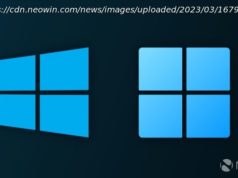The word on the LG G7 is still mum, but that hasn’t stopped us from thinking about what we want next year’s flagship to be.
The LG G6 was unleashed onto the world in early 2017, so we’re ready for its successor, the LG G7.
What will it look like, what’ll be inside, and will LG finally cut it out with the region-specific features? Let’s get started.
Below, you’ll find the developing story of the G7 as we know it through rumors, leaks and confirmed news. And of course, we’ve added our own two cents as to how we hope next year’s flagship comes together.
The LG G7 launch is likely to happen at MWC 2018, so we’re likely to see it on or around Sunday, February 25,2018.
That’s our best guess based on the fact that both the LG G6 and LG G5 were launched at MWC. The Barcelona conference is a big, easy venue for LG to gain worldwide attention.
However, one rumor suggests it could actually land in January in order to get out ahead of the Samsung Galaxy S9. In that case we might see it at CES 2018, but we’re skeptical.
We’ve also heard from another source that it won’t be unveiled until March, or hit stores until April.
Whenever it lands it won’t be cheap. In line with other LG flagships, we expect it cost north of $700 at retail, around $729 (about £568, AU$967). It’s a lot of cash, but not as much as some others. The Samsung Galaxy S8, for example, started at around $750.
There’s not much in the way of LG G7 rumors yet, but there has been some question as to the name, with one source suggesting it might be rebranded.
However, LG itself has used the G7 name both on its website and a now-removed app, so that’s still looking the most likely.
We have also heard reports that LG planned to switch to OLED screens in its flagships from late 2017. That panned out, with the LG V30 packing an OLED screen, so the LG G7 may well have one too and could benefit from the blacker blacks and vivid images that OLED is known for.
And the LG G7 could be very powerful too, with one source claiming LG is working with Qualcomm to ensure the G7 uses the Snapdragon 845 – which is likely to be the main flagship chipset of 2018.
That would make sense, since many criticized the G6 for its use of the dated Snapdragon 821, and LG won’t want to make the same mistake twice.
LG’s earnings for 2017 have shown that the LG G6 has been slow to sell, likely a result of launching in the midst of the competitive release season alongside the Samsung Galaxy S8 and Samsung Galaxy S8 Plus .
However, its internals, which we mentioned as being slightly behind the times, could have been part of the issue. Knowing that phones with the Snapdragon 835 were coming put an obstacle in front of the G6 before its launch.
You can bet that LG will be gunning to have the most powerful phone around this year, or at least be on par with its competitors.
There’s a lot about LG’s 2018 flagship that can probably be gleaned from the G6, too. Considering that it was the first major smartphone to release with small bezels and a 18:9 aspect ratio, signs point favorably to the next phone keeping in line with that general design philosophy: a large, tall screen inside of a compact build.
However, what it will look like piece-by-piece is, right now, a complete mystery. Today’s best practices in flagship smartphone manufacturing aren’t likely to change all that much going into 2018, so expect to see a fair share of curvature and metal dashed around the device, with more focus directed to the screen.
What do we want to see in the LG G7? We’re so glad that you asked.
The LG G6 opts for business (flat) in the front and party (curved) in the back, but we’d like to see LG mix up the formula for the next iteration of its G series.
After seeing how well Samsung’s curved Edge experiment turned out —being that it has made the core S product even more refined— the LG G7 would be the perfect test bed for a brand new curved look, with the hope being that the learnings will feed into making future G phones even better looking.
Plus, who doesn’t love a bit of curved screen? It feels really good in the hand and looks futuristic. If LG can build in some utility, as we’ve seen from Samsung, all the better.
The Snapdragon 821 inside of the LG G6 is no slouch. It’s perfect for everyday use, only slowing down under the immense pressure of Daydream VR in the Google Pixel (the G6 doesn’t support Daydream. We’ll get to that later.). But even with its performance pedigree, it’s old news.
When the G6 launched, one of its main highlights was that it used old technology – not the takeaway you’re aiming for in your brand spanking new flagship smartphone. Not just that, the S8 showed it up with the next-gen Snapdragon 835 shortly after its release. Not the best look.
While LG’s latest appeals to those looking for a well-built smartphone with a ton of features, it’s going to have to work to get back the hardcore audience that cares about raw performance capability. Adopting the Snapdragon 845 would be a good way of doing just that.
LG is familiar with making phones that have removable batteries. Take the LG G4, LG G5, LG V10 and LG V20 as some recent examples. So, there’s little to no reason as to why its next flagship shouldn’t have this sought-after feature.
Of course, slimmer design requires sacrifice somewhere around the device, so while it’s understandable that LG removed the ability to swap batteries in its latest smartphone, it’s a real crowd-pleaser that’s worth keeping in mind for next year’s model.
After last year’s Samsung Galaxy Note 7 battery fiasco, the benefits of a removable battery explain themselves. Fortunately, LG’s reputation in the battery department is iron clad, but even so, power users love being able to keep the experience going with swappable batteries and we’re in the same boat.
The LG G6 is the jack-of-all-trades, well, depending on where you live. If you’re in the US, you’re treated to wireless charging, but not the quad DAC hardware that makes your audio sing at audiophile-grade quality.
Those elsewhere in the world might have been treated to the quad DAC, but they were then missing wireless charging. As a result, there is no ideal version of the LG G6.
In the company’s quest to give each region what they clamor for, they’ve abandoned a piece of their audience that has likely moved onto a different phone this year as a result.






